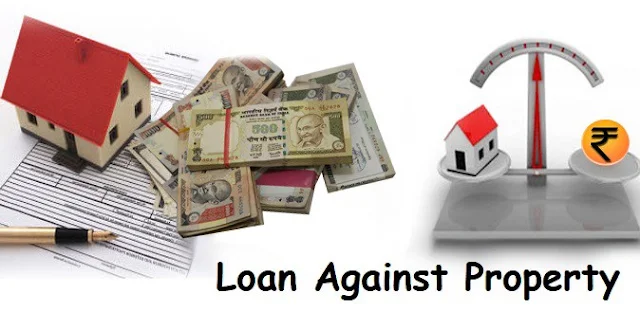Ad Code
Translate
List of 6,000+ Dofollow Commentluv Blogs FREE (Updated 2025)
January 16, 2025
What is Ozempic (semaglutide)? (Updated in 2025)
January 30, 2025
How To Find Suitable Properties In Cyprus? (Updated in 2025)
January 11, 2025
DStv Packages in South Africa, channels and prices comparison for 2025
February 21, 2025
Smart strategies for trading on crypto exchanges
February 18, 2025
Loan against Property vs. Term Loan vs. Overdraft - Which One is Better?
Khabza Mkhize
March 26, 2024

Loan against property is a popular loan, as it gets quickly approved, requires minimal documentation, comes with a long repayment tenure, and can be availed by virtually any Indian citizen. All you should have is a property or a plot of land with ownership or co-ownership rights. The lender generally approves up to 80% of the mortgaged asset's value. However, most borrowers often get confused when it comes to choosing the right type of loan against property - term loan or overdraft. Borrowers don't understand which one is good for their requirements.
Read this article to understand the differences between the loan against property term loan and overdraft so that you can figure out the right one for you.
What is the Loan Against Property Term Loan?
If you meet the easy loan against property eligibility criteria, the lender will offer you two options to choose from. The first and most availed option is the term loan. On selecting the term loan option, the lender would approve the entire loan amount upfront. Hence, the EMIs will be calculated on the total disbursed amount, and not on the amount you are using at any given time.What is the Loan Against Property Overdraft?
If you opt for the loan against property overdraft facility, the lender will approve the loan upfront, but you may withdraw the amount you need, as and when you need it. The best feature of an overdraft is that you have to pay interest only on the amount you withdraw and not on the entire approved loan amount.Which Loan Against Property Should You Choose?
Both term loans and overdraft have their own merits and demerits. Here is a ready reckoner of the things you should keep in mind before choosing the right option for your needs.1. Purpose of Use
As the loan against property eligibility is more manageable than many other loans, people use it for any purpose they want to. Sometimes, you might require the loan amount to pay medical bills or pay tuition fees of a school or college; while at other times, you might need it to meet your business's working capital requirements or spend in a staggered manner.A term loan will suit you more if you plan to use the funds for catering to a one-off event, which requires a lump sum amount. On the contrary, an overdraft would fit you the best if you need the money periodically for business or other purposes, but do not know when and how much you would require in an instant.
2. Renewal of Loan
When you avail a term loan, the lender enters into an agreement with you, which clearly states the amount you need to pay every month and the tenure of the repayment. The borrower would be legally obligated to pay the pre-decided amount every month, failing which the lender might initiate legal proceedings against the borrower. Hence, the tenure is fixed, and there is no requirement to renew it before the end of the term.In the case of an overdraft, however, the lender would ideally want you to renew the overdraft every year. If at the time of renewal, the lender feels that your creditworthiness has decreased, they might not renew the overdraft, thereby exposing you to the risk of clearing off the dues within the date set by the lender.
3. Charges
The lender would impose a processing fee when you apply for a loan against property. The processing fee is a one-time charge, and you will never be required to pay anything extra ever, other than the EMIs.However, in case of an overdraft, the lender may charge a processing fee every time you withdraw an amount. Moreover, the lender may impose a commitment fee on the unutilised part of the overdraft. In some cases, the interest rate might be a little higher than the term loan.
Conclusion
While it is true that the loan against property overdraft facility offers you unparalleled convenience overusing the funds, not too many lenders offer this facility. The loan against property term loan, on the other side, is readily available, and the eligibility criteria are much simpler. Hence, choose the loan which suits your requirement.Featured Post
12 Prominent new technologies and trends emerging in 2024
Khabza Mkhize-
February 27, 2025
Sister Sites
Most Popular
List of 6,000+ Dofollow Commentluv Blogs FREE (Updated 2025)
January 16, 2025
Smart strategies for trading on crypto exchanges
February 18, 2025
Popular posts
List of 6,000+ Dofollow Commentluv Blogs FREE (Updated 2025)
January 16, 2025
Smart strategies for trading on crypto exchanges
February 18, 2025
iThonga Soapie Teasers on Mzansi Magic- March 2025
March 07, 2025
Footer Menu Widget
Created By Blogspot Theme | Distributed By Gooyaabi Templates

0 Comments